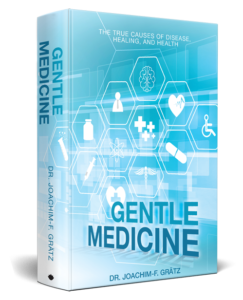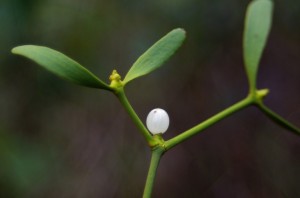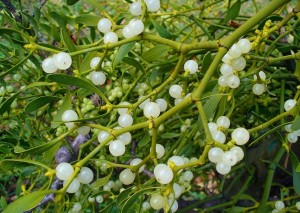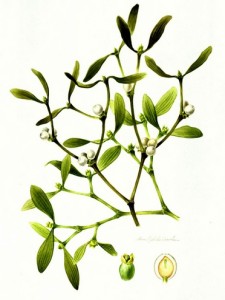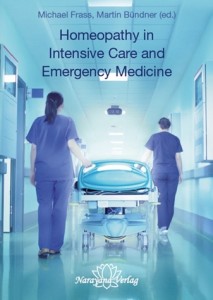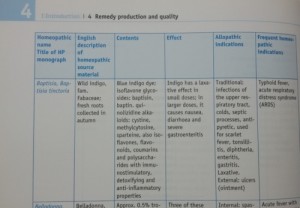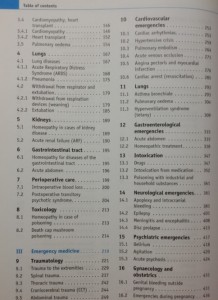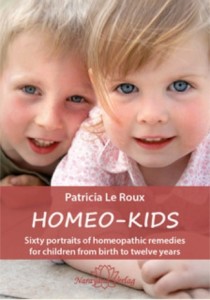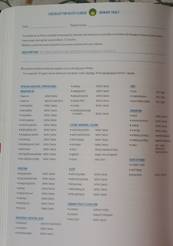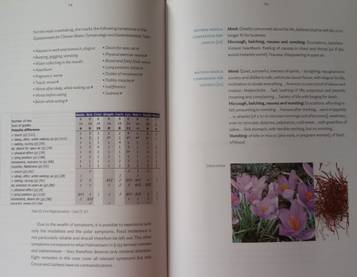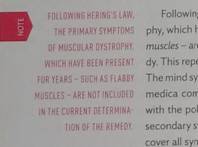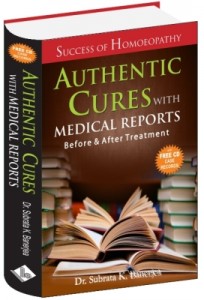Author: Dr. Joachim-F. Grätz
English Edition January 2021
Reviewed by Dr. Firuzi Mehta
Published by Balboa Press
Softcover, hardcover and e-book options. The hardcover one comes with a dust jacket.
ISBN: 978-1-9822-5378-3 (paperback)
978-1-9822-5380-6 (hard cover)
978-1-9822-5379-0 (e-book)
No. of pages: 652
Price: Softcover USD 34.99
Hardcover USD 48.95
E-book USD 8.99
Health, today, stands at a precarious junction. Over the last century, ‘advances’ in medicine have made huge strides in terms of new discoveries, technology, etc. However, the health of humankind hasn’t really improved alongside. We have traded, in exchange, acute infectious illnesses for deeper chronic ailments. Perhaps the last century has seen an increase in mankind’s life span, but the quality of life is questionable, living with myriad chronic ailments and a handful or more of chemical drugs on a daily basis to keep existence going.
This brings us to question whether we are headed in the right direction. Are we creating health? Or, are we, with our ‘fantastic’ medical treatments, pushing our human bodies towards further destruction and ill-health? The way things are moving, I do not think that the increase in life spans will last more than a few generations. People are developing dangerous chronic illnesses at a much younger age nowadays and this will eventually lead to earlier deaths, unless something dramatically changes in the way we perceive health and disease and hence change the way we treat.
Dr. Joachim-F.Grätz’s book, “Gentle Medicine – The True Causes of Disease, Healing and Health” is a book that, I feel strongly, should be read by everyone – not just health professionals, because every human being has a stake and role to play in the maintenance of their own health, for their own sake and for their future generations. For health professionals who truly care to make a positive change to the health of their patients and who are disturbed by what they see happening today in the name of medicine, this book is a must-read.
Throughout the book, Dr. Grätz reinforces, time and again, the universal laws of nature and how the correct medical approach has to be one that works with these laws, not against them. The book highlights, case after case, how current mainstream medical practices try to bring about removal of the manifestations of illness, without ever touching the root cause and how repeated suppressions of this type over the years, lead to worsening health and the development of newer, deeper diseases. Dr. Grätz does not present theories or hypotheses. Nor does he ask one to have faith or belief in a system. It is purely about the facts of natural laws and their application for the benefit of not just the individual but humanity at large, in the long run.
As Dr. Grätz writes, this book gives us a new perspective and understanding of health and disease. For classical homeopaths, much of it is not really new, but it serves to clarify, reinforce and strengthen our understanding of health, disease and classical homeopathy. We will start seeing the underlying patterns of wrong treatment, which over the years, actually create disease. We will realise that disease never happens ‘just by chance’.
The book begins with a review of today’s healthcare system. It is a very interesting chapter and will be an eye-opener in a lot of ways. This book brings to light many of the scientific frauds perpetuated in the past and turns some pre-existing concepts on their heads with logic and rational thinking. It lists harrowing stories of some of the atrocities being done in the name of development and science even in recent years. When we studied medicine, we learnt about the horrendous treatment methods used in the past. With an open mind, we can see that things are not much different today, only they are couched in fancy terminology and explained away as the latest revolutionary advances in medicine. This chapter definitely raises a lot of key questions that need to be asked. Regular medicine is anything but ‘gentle’. Restoring health to patients using modern methods is almost impossible. The focus of disease is, at best, just shifted from one place to another. The author clearly accepts the important role that conventional medicine plays in life-saving and emergency use, but he reiterates its complete inadequacy in treating any chronic ailment with any goal of real cure.
The next chapter is devoted to the Chronic Laws of Classical Homeopathy. A well-written chapter that explains how homeopathy views acute and chronic diseases. Dr. Grätz elaborates on the concept of miasms that most homeopaths know about, but few thoroughly know how to use in practice. Many of the issues that perplex homeopaths are explained. There are sections on individual miasms and how we can identify these miasms in our patients, right from infancy. It explains what we need to focus on to prescribe correctly, miasmatically, the importance of understanding the energetic process of disease, the ‘real disease’ behind the disease. The very important fact to understand is how improper treatment and suppressions can activate dormant miasms with disastrous results and that with homeopathic anti-miasmatic methods, we can reduce any inherited predispositions.
The third chapter deals with General Medical Basics based on the Laws of Nature. The readers would do well to understand the biological natural laws and the two-phase nature of disease and the appearance of microbes as given in this chapter. An interesting aspect Dr. Grätz touches on is of German New Medicine – the sections on biological conflicts, the biological rule of handedness, show how these impact the creation of disease. All these are analysed from the perspectives of modern medicine and of homeopathy.
A small but important chapter is the fourth one. Encephalopathy – A necessary consequence of vaccinations. Now that we are in 2022 and the world has seen an unprecedented mass vaccination campaign with notorious mandates being put into place in some form or other, I dare say that a lot more people have opened their eyes to the vaccination debate, after seeing so much of the destruction and deaths that the covid vaccines have left in their wake. Dr. Grätz discusses the issue of vaccination reaction and damage with clear references and case reports. It is valuable to understand the why and how of vaccine damage and how it is covered up by the industry. The topic on vaccinations continues as part of the FAQs towards the end of the book. With clear references, Dr. Grätz shows how statistical tricks have been used to advertise the so-called benefits of vaccinations. With clear cases, he shows how vaccinations have emerged as the main cause of demyelinating encephalopathies. He shows how with every vaccination and suppression, the miasmatic predispositions are exacerbated, how vaccinations can intensify the primary miasms and can clearly shift the general health situation towards destruction. This holds true for all vaccinations and doesn’t apply to just one specific antigen.
The fifth chapter elaborates on Dr. Grätz’s personal experiences in treating patients with Gentle Medicine. Gentle Medicine means understanding natural processes and laws and providing meaningful support for any health problems. It has to involve holistic and energetic thinking. He also explains the importance of the compilation and hierarchization of the important symptoms for repertorization.
There are sections on different cases from Dr. Grätz’s practice – neurodermatitis, psoriasis, multiple sclerosis, tendency to infections, Lyme disease, cardiovascular disease, bronchial asthma, allergies, etc.
This chapter makes for very interesting reading because it becomes clear how a detailed case history invariably shows the true triggers of the disease being the harmful and suppressive treatments received in the past, overuse of chemical medication and vaccinations which activate the latent miasms. However, conventional medicine hardly ever sees these links and is ready to blame ‘chance’ or ‘genetics’ in most cases. When we read these cases, it becomes clear to us that nothing ever happens ‘by chance’! Several cases of kidney failure illustrate the absence of chance and the provoking presence of chemical medication. Worm and lice infestations, other parasitic and fungal infestations are also discussed along the same lines, as are rheumatism, polyarthritis, migraines, epilepsy, hyperactivity, ADD, ADHD, developmental delays, perception and coordination disorders, autism, minor and severe brain damage, illnesses of the gastrointestinal tract, musculo-skeletal disorders, mood disorders, depression, schizophrenia, psychoses, OCD states, diabetes, thrombocytopenia, muscular dystrophy, all find a place in the discussions in this chapter.
The sixth chapter is one of FAQs – Frequently asked questions: answers and thoughts; which I found fascinating. This chapter discusses, amongst other things, vaccinations, antibiotics and some other conventional treatment protocols.
This beautiful book ends with an Epilogue and an elaborate Appendix. There are excerpts and extracts from Dr. Grätz’s questionnaires that he uses in his homeopathic practice. The questionnaires are very relevant because the medical history is about determining the data, facts and correlations of the patient’s entire life. All previous treatment attempts must be carefully assessed. Identifying the underlying miasms and working out the currently active miasm are of crucial importance. There are charts at the very end of the book which would be of utility for a quick revision of concepts discussed earlier.
This, I would say, is an empowering book. Case after case shows that no illness happens just by chance – there is always a deeper cause, and getting to this deep cause and treating it with good anti-miasmatic homeopathy can eradicate it. We are not helpless and at the mercy of our illnesses. The message that we come away with, after reading this book, is that the practice of medicine, in principle, needs to completely correct and renew itself. Dematerialized remedies only can be part of Gentle Medicine, as must be changes in diet and our own creative thought processes. All the case histories given in the book substantiate the claims. Getting close to absolute health is a possibility, but only by following proper laws and methods. There are no short-cuts to good, long-lasting health.
I never end my reviews without a short note on the quality of the book. This book ticks all the right boxes. Good quality paper, good print, good binding – for such a thick book, even the paperback form is great. The hardcover version apparently has even better paper quality!
All in all, this is a book any serious homeopath will appreciate, worthy of being on our bookshelves and of being read, not just once, but time and again, like our Organon. I wholeheartedly recommend this book. Dr. Grätz, thank you, for writing this amazing book which will inspire homeopaths and other health practitioners, for generations.
